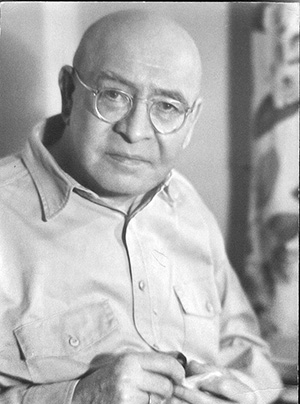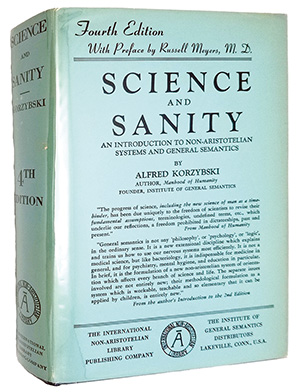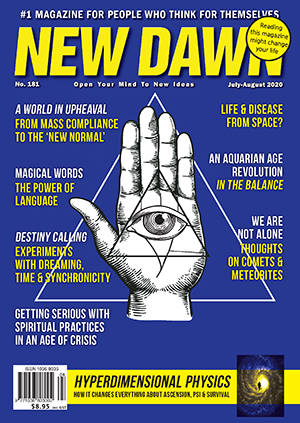From New Dawn 181 (Jul-Aug 2020)
Words hold incredible power. When used poetically, they can evoke the most primal of passions within us. When used destructively, they can wage war and create conflict. When used imaginatively, they can create fantastic worlds of fantasy. When used persuasively, they can seduce us into the empty promises of commercial advertising. When used benevolently, they can facilitate social, economic and political change. Words can be used to control us, motivate us and inspire us, and yet many of us are unaware of their hidden esoteric power.
It could be argued that words have a life of their own. They have a reality independent of our own existence. As the writer William Burroughs observed, certain words and phrases function in a similar way to a virus (see page 40); they spread from person to person until they become embedded in our collective consciousness. One only has to look at the countless memes that become ‘viral’ on the internet to acknowledge their inherently infectious quality.
The biologist and writer Richard Dawkins argues that words operate in a similar way to DNA. Concepts and ideas battle against each other for survival and those which are successful become populated across societies. He writes: “Just as genes propagate themselves in the gene pool by leaping from body to body via sperms or eggs, so memes propagate themselves in the meme pool by leaping from brain to brain via a process which, in the broad sense can be called imitation.”1
Politicians are particularly aware of the power that language holds over us. During the US presidential campaign in 2008, Barack Obama employed a lexicon of ‘hope’ to instil a feeling of optimism in marginalised communities, and envision a more compassionate America. When Donald Trump was elected to the White House in 2016, the term ‘alternative facts’ became popular among the conservative right of politics to discredit what different news outlets were reporting on various scandals surrounding the new administration. The use of rhetoric proved highly important during the UK’s ‘Brexit’ referendum in 2016, which saw both sides of the political spectrum using highly emotive language to divide voters on key issues. As the linguist Noam Chomsky observes, words are the ultimate currency of political power and are manipulated to create a sense of tribal kindship within certain electoral factions.2
Commercial businesses are also aware of the hypnotic effects of language. Each year, corporations spend billions of dollars investing in advertising campaigns to promote products and target consumer demographics. Much of the time, they use loaded language – words with positive or negative connotations to describe a product or that of a competitor. These words appeal to consumers’ emotions, rather than their logical faculties, thereby fetishizing the product being sold. For years, the Coca-Cola Company used the phrase, “the pause that refreshes,” to convey the image (and implant the memory) of the refreshment brought on by consuming a bottle of fizzy coke. These advertising phrases have a memetic quality and become embedded in our collective unconscious, acquiring a mythological status as they get passed on from person to person.
Occultists, mystics and shamans have always been familiar with the power of words. One only has to look to religions such as Hinduism and Buddhism and the use of mantras to recognise how language invokes intense feelings of spiritual connection. In Christian cosmology, one of its key precepts reads: “In the beginning was the Word, and the Word was with God and the Word was God.”3In all forms of magic and occultism, secret words and combinations of words were of paramount importance. The fact that the word ‘spell’ is used to denote how certain words are organised is testament to the magical power of language.
But how powerful is language? We know that language can affect how we feel but can it also shape our perception? To what extent are our experiences of the world influenced by the modes of communication we use each day?
Korzybski & General Semantics
In 1933, the Polish-American scholar Alfred Korzybski published his seminal work, Science and Sanity: An Introduction to Non-Aristotelian Systems and General Semantics.4 The book established a new school of thought, General Semantics, which studies the relationship between language and reality.
Although the book was criticised at the time of publication, Korzybski’s ideas were subsequently developed by the American academic S.I. Hayakawa in Language in Thought and Action.5 Since then, General Semantics has become a systematic philosophy of linguistics, influencing a variety of academic disciplines. As the American linguist Benjamin Lee Whorf noted, General Semantics is the examination of how language “isolates the world of phenomena into categories and organise[s] the categories in our minds by means of our linguistic system; our speech communities slowly codify the patterns of language in such a way that its terms become absolute and obligatory and therefore we cannot communication without subscribing to the organisation and classifications that the language decrees.”6
The first premise of General Semantics is that language never constitutes reality but merely describes it. As Korzybski stated, “every language having a structure, by the very nature of language, reflects in its own structure that of the world as assumed by those who evolve language.” Because language is diagrammatic, the words we use are never equal to the event, person, object or experience that we are describing. For instance, an individual who has acted outside the law may be described as ‘criminal’, however, another person may describe them as ‘responsible’ because they are a good father to their children; neither description is true but neither description is false either. In this sense, language cannot be considered a representation of the world since it depends on the exclusionary categorisation of phenomena to effectively function as a communicative tool.7
The second premise of General Semantics if that language never describes reality in its entirety. Korzybski famously said “the map is not the territory.” For example, when I describe a person as ‘happy’, I am excluding all the times that they have experienced anger, depression or jealousy. When I describe a person as ‘respectable’, I am disregarding all the times they have jumped a red light or pushed into a queue. In other words, our linguistic models may be considered inaccurate since they describe events, experiences, objects and people from a single position of space-time, rather than all potentialities simultaneously.8
The third premise of General Semantics is that in order for us to use language more meaningfully, we must constantly re-evaluate our assumptions about reality. As Korzybski stated, “no map can be accurate unless it contains itself within the map.” That is to say, when we attempt to describe reality using a particular linguistic model we must be aware that our descriptions are limited by the information that we have at that particular time. For example, prior to Einstein’s theory of relativity, it was common for scientists to describe space and time as separate aspects of the physical universe; we now describe them as being part of a space-time continuum. In this sense, all linguistic models are grounded in the limited knowledge we have of the world around us; they must be constantly updated and revised to account for recent developments in our understanding.9
As Korzybski observed, language can influence our thoughts, feelings and behaviour. I may call a person an ‘idiot’ because they have acted foolishly or made an error of judgement, but labelling them in such a categorical manner may result in me acting differently towards them than if I had said, “at this particular time, in this particular place, this person is acting foolishly.” By recognising the assumptions that underlie our linguistic models, we can become more pragmatic in our descriptions of the world; we can assume greater control over language and use it to our advantage. The American author, poet and futurist Robert Anton Wilson said: “Those who control symbols control us. You might as well say those who control symbols have the whole world hypnotised. You better become a controller of symbols yourself or you’re going to remain in a trance, a self-hypnotic ideational trance that somebody else laid on you.”10
Korzybski is not alone in thinking that language and thought are inextricably linked. Cognitive scientist Lera Boroditsky claims that, “Linguistic processes are pervasive in most fundamental domains of thought, unconsciously shaping us from nuts and bolts of cognition and perception to our loftiest abstract notions and major life decisions.”11 David Ludden, professor of psychology at Georgia Gwinnett College, also believes that “each language carves up the world somewhat differently… each language provides its speakers with a particular worldview that won’t be quite the same as the one that speakers of other languages have. In other words, we see the world according to the framework our language imposes on us.”12
When you think about it, the notion that language and cognition are fundamentally connected is not a particularly radical one; our thoughts, feelings and behaviours are constantly influenced by our choice of words. Anyone who has been around a person with an exceptionally optimistic attitude knows that positivity is infectious, it rubs off on you. In the same way, negative words and phrases become part of a psychological feedback-loop that reinforce our feelings of depression and negativity. Advertising is such a powerful tool of the capitalist system because language can be strategically used to place us in a hypnotically induced state of emotion, whereby we associate certain feelings with specific words, logos and expressions.
Language & Sensory Perception
Many academics criticise Korzybski’s assertion that language shapes experience, arguing that our linguistic models embody the neurological structure of the brain. However, scientific research into the relationship between language and sensory perception demonstrate that the scope of our vocabulary can actually modify our experiences of reality. In 2008, psychologists from the University of London tested how speakers of English and Himba – a language spoken in northern Namibia – categorised colours presented to them on a computer screen. The Himba language classifies colours in a different way to English. For example, Himba does not contain separate words for green and blue (both use the word buru), whereas English does. Moreover, Himba uses different words to distinguish between various shades of green (dambu and zuzu to light and dark green), while English classifies both dark green and light green as members of the general category ‘green’.13
The researchers found that this linguistic difference also translated into a perceptual difference: when shown a circle with 11 green squares and one blue square, Himba speakers struggled to indicate which one was different from the others. However, when they were presented with 12 green squares, one of which was slightly lighter than the others, the pattern reversed: Himba speakers readily identified the different shade, however English speakers failed to do so. In other words, speakers of both languages were better at distinguishing between colours that had a linguistic distinction in their language. English speakers, whose language classifies ‘green’ and ‘blue’ separately, found it easier to distinguish between the two. Himba speakers, on the other hand, whose language encodes differences between shades of green, had no difficulty in differentiating between various green hues.
Similarly, a study conducted by Jonathan Winawer and his research colleagues at the Massachusetts Institute of Technology found that native speakers of Russia discriminated between light and dark shades of blue differently to their English-speaking counterparts. Unlike English, the Russian language makes a linguistic distinction between light blue, pronounced ‘goluboy’, and dark blue, pronounced ‘siniy’. The researchers tested English and Russian speakers in a timed colour discrimination task, using blue stimuli that spanned the siniy/goluboy border. The data revealed that Russian speakers were much quicker at discriminating between the two colours because of this linguistic differentiation. The research demonstrates that when people have access to wider vocabulary to describe colours, their sensory perception of colour actually becomes more acute.14
It turns out that grammatical structures can also influence perception. Many languages are gendered, meaning that speakers are required to modify pronouns, adjectives and verb-endings depending on whether a noun is ‘feminine’ or ‘masculine’. In the Russian language, for example, the word ‘chair’ is considered masculine and therefore any sentence containing the word must adhere to a ‘masculine’ grammar structure. Assigning a gender to a particular word does not just change the structure of a language but also our perception of certain objects. In a study conducted by Lera Boroditsky, Assistant Professor of Cognitive Science at University of California San Diego, researchers found that when asked to describe an object, speakers were more likely to use adjectives associated with its assigned gender. For example, in the German language, ‘bridge’ carries a feminine pronoun, and therefore Germans were more likely to refer to a bridge as ‘beautiful’ or ‘elegant’. Spanish speakers, on the other hand, were more likely to refer to a bridge as ‘strong’ or ‘sturdy’ because the word is masculine in the Spanish language.15
The Implications of General Semantics
The fact that language can shape our reality so viscerally has significant implications. It demonstrates that words have the power to contextualise our perceptual experiences and influence how we see the world. If we are to engage in open and honest discussions about social, political and economic issues, we need to understand how language can be manipulated, controlled and even abused.
In the age of social media, where our thoughts and opinions are condensed to 140 characters, we must question the biases, assumptions and preconceptions that underlie our current linguistic models. Much of our disagreements stem from the fact that we are limited by our language; we are prisoners to a particular linguistic system that does not account for the nuances of our reality.
Take the abortion debate. Many people are divided on this particular issue because they have different perceptions of what is meant by the word ‘life’. Some believe that a small cluster of cells constitutes ‘life’, while others believe that ‘life’ must possess a consciousness; a human awareness. In this sense, the boundaries of political engagement are essentially calibrated by the linguistic models to which we have access.
If language has the potential to alter our perception of colour, it surely has the potential to alter our perception of people, communities and societies. Once we understand the power that words have over us, we can begin to assume greater control over the symbol-systems that govern our lives; we can recognise when language is being used to control, deceive and misinform us. It is only then that we can use language more honestly and meaningfully.
Footnotes
1. The Selfish Gene by Richard Dawkins, Oxford Paperbacks, 1989
2. Language and Politics by Noam Chomsky, AK Press, 2004
3. John 1:1, The Holy Bible, New International Version, 2011
4. Science and Sanity: An Introduction to Non-Aristotelian Systems and General Semantics by Alfred Korzybski, Institute of General Semantics, 1995
5. Language in Thought and Action by S. I. Hayakawa, George Allen & Unwin Ltd., 1959
6. Language, Thought and Reality by Benjamin Lee Whorf, MIT Press, 1964
7. Science and Sanity, Korzybski
8. Language in Thought and Action, Hayakawa
9. Science and Sanity, Korzybski
10. Lecture by Robert Anton Wilson, www.generalsemantics.org/wp-content/uploads/2011/04/gsb-65-wilson.pdf
11. How does our Language Shape the Way We Think? by Lera Boroditsky, www.edge.org/conversation/lera_boroditsky-how-does-our-language-shape-the-way-we-think
12. How Language Shapes Our World by David Ludden Ph.D, www.psychologytoday.com/gb/blog/talking-apes/201509/how-language-shapes-our-world
13. Knowing Colour Terms Enhances Recognition: Further Evidence from English and Himba by Julie Goldstein, Jules Davidoff and Debi Roberson, Journal of Experimental Child Psychology 102 (2009) 219-238
14. The Russian Blues Reveal Effects of Language on Colour Discrimination by Jonathan Winawer, et al, Proceedings of the National Academy of Sciences of the United States of America, 2007; 104(19): 7780-7785
15. Language in Mind: Advances in the Study of Language and Thought, edited by Dedre Gentner and Susan Goldin-Meadow, MIT Press, 2003
© New Dawn Magazine and the respective author.
For our reproduction notice, click here.






